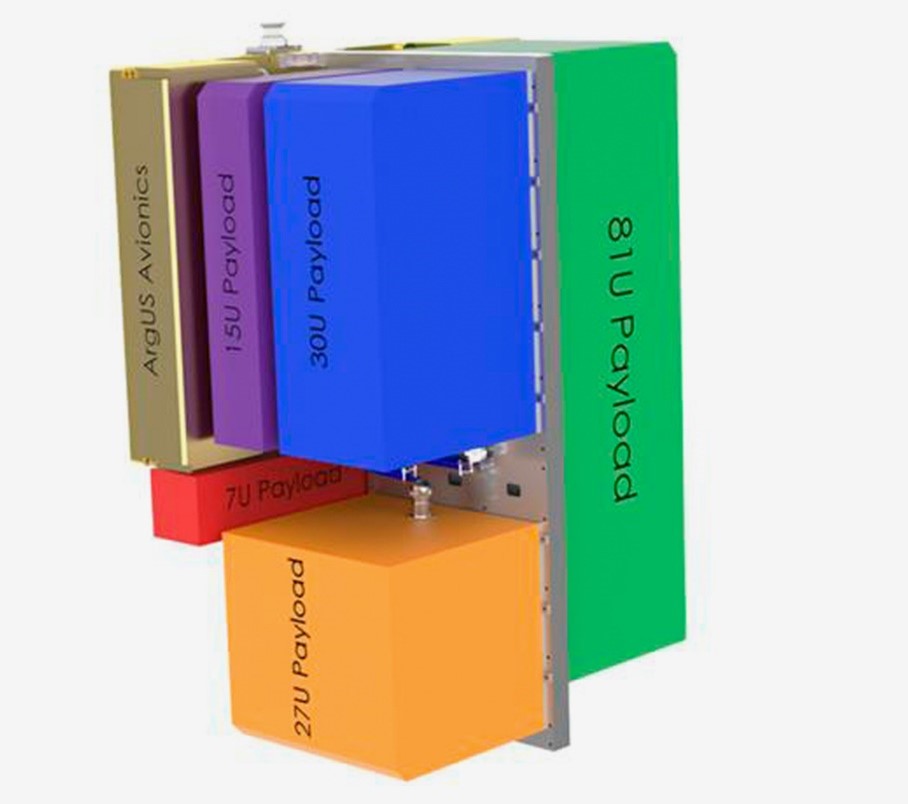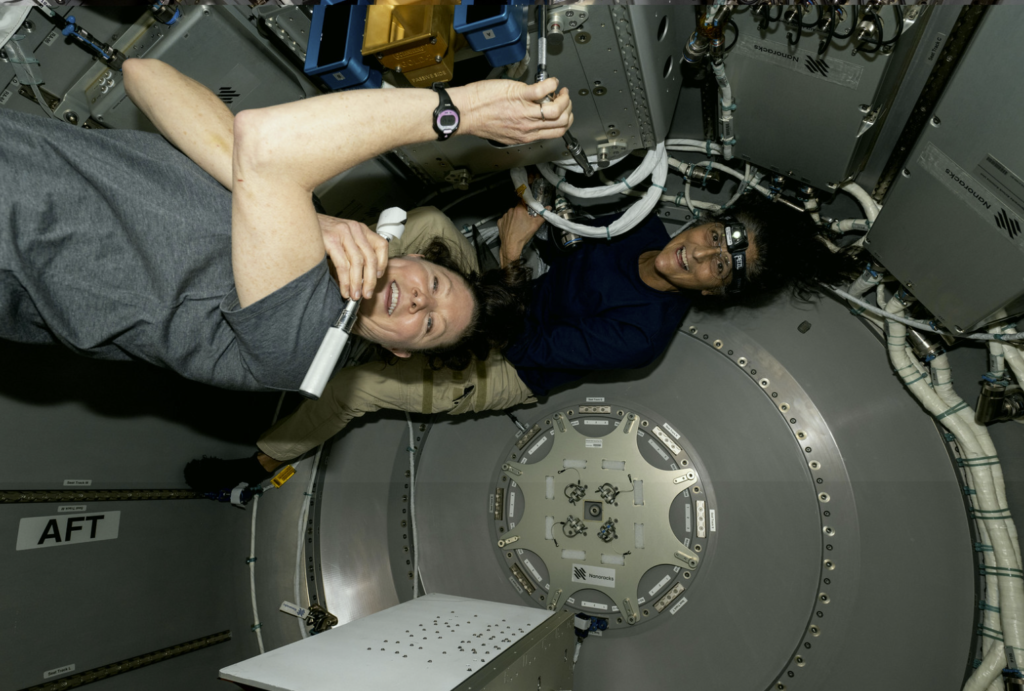
Airbus U.S. has enhanced Earth observation capabilities on the ISS through its ArgUS platform on the Bartolomeo module, allowing smaller payloads to be hosted alongside payloads for larger experiments. ArgUS, supported by the ISS National Laboratory, enables multiple research projects to operate simultaneously, with standard slots starting at 3U in size. Notable payloads include Sen’s SpaceTV-1, a 4K camera system offering real-time views of Earth, freely available through the Sen app, and BAE Systems’ advanced equipment for climate and weather monitoring. BAE’s contributions include a radio frequency receiver for atmospheric analysis and an infrared camera for environmental imaging.

The platform’s newArgUS Multi-Payload Adapter allows for smaller slots, down to 3U size (300 x 100 x 100 mm3)

These technologies aim to provide new insights into climate change, natural disasters, and other environmental phenomena while potentially supporting future lunar missions. The ArgUS platform is designed to democratize access to space, offering faster data transfer, technical support, and reduced costs for research institutions and private organizations. Launched on SpaceX’s 30th Commercial Resupply Services mission, this setup aims to accelerate scientific research by making crucial data available quickly and affordably. Through ArgUS, Airbus seeks to lower the barriers to space research, offering a practical and collaborative environment for technology demonstrations and scientific discovery.
The Sen cameras on the ISS, specifically the SpaceTV-1 system, work by capturing real-time 4K video from the station’s external vantage point. The system includes multiple cameras: some focus on Earth, providing views of the horizon and downward perspectives, while others monitor activities around the ISS, such as the forward-facing Harmony docking port. The captured high-resolution video streams directly to Earth and is made freely accessible through the Sen app, allowing users to view real-time footage of Earth from space, supporting educational, research, and environmental monitoring purposes.
Sen is a space technology startup founded in 2011 by Charles Black and based in Guildford, U.K. The company focuses on streaming real-time videos from space using its network of satellites. Its goal is to provide high-definition video data from Earth’s orbit for anyone and everyone, not just for space agencies and the military. The company has raised about $8.54 million in total funding, with its most recent seed round in 2022 backed by investors like Mercia Asset Management and Hemisphere Ventures.
Sen is currently being tested on the International Space Station (ISS), occupying a single slot on the in Bartolomeo,
What is Bartolomeo?
Bartolomeo, developed by Airbus U.S., is a versatile payload hosting platform attached to the International Space Station’s Columbus module. It offers easy, cost-effective access to low-Earth orbit for research and commercial projects. Bartolomeo accommodates a range of payload sizes and provides end-to-end services, including launch, installation, data transfer, and optional payload return. It is ideal for Earth observation, material science, robotics, and more, offering an unobstructed view of both Earth and space. This setup enables institutions and private organizations to carry out space missions without needing complex space systems.
The Bartolomeo system, developed by Airbus, got its name from the historical figure Bartolomeo Dias, a Portuguese explorer. Dias is known for being the first European to navigate around the southern tip of Africa, opening the way for a sea route from Europe to Asia in 1488.
“Airbus is improving our ability to observe and understand our planet as well as democratizing access to space by accommodating more research and technology demonstrations on the ISS than ever before,” said Debra Facktor, head of U.S. Space Systems for Airbus U.S. “Our ArgUS platform on Bartolomeo will accommodate smaller payloads with the same power, data regulation, and monitoring as larger projects.”
“ArgUS is essentially a cosmic co-working space, where diverse experiments perform side by side,” Facktor added.
What is ArgUS?
The ArgUS platform is an advanced payload hosting system on the ISS, integrated into the Airbus Bartolomeo module. It enables smaller research and technology experiments to share space in low Earth orbit, starting at sizes of 3U (300 x 100 x 100 mm³). ArgUS provides power, data management, and environmental monitoring for these smaller payloads. This setup supports a range of applications like Earth observation and space-based technology testing, offering faster data downlink and making access to space more affordable and practical for various research institutions and private organizations.
In Greek mythology, Argus, often called Argus Panoptes, is known as a giant with many eyes. He served as a watchman for the goddess Hera. His numerous eyes made him a perfect guardian, as some of his eyes could rest while others remained awake. Argus is most famous for guarding Io, a nymph transformed into a cow by Zeus. Hermes was eventually sent to put Argus to sleep and kill him, after which Hera placed Argus’s eyes on the peacock’s tail as a tribute.

